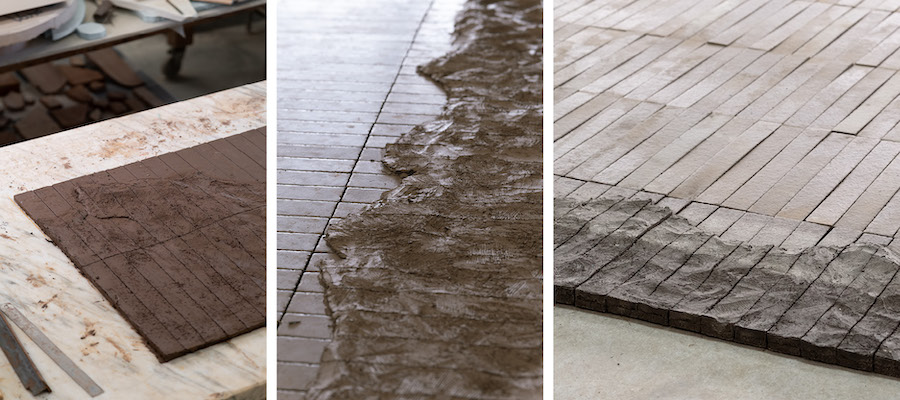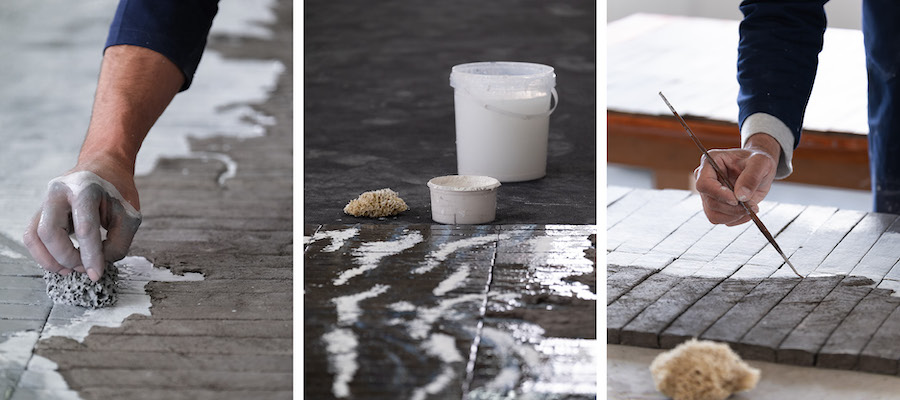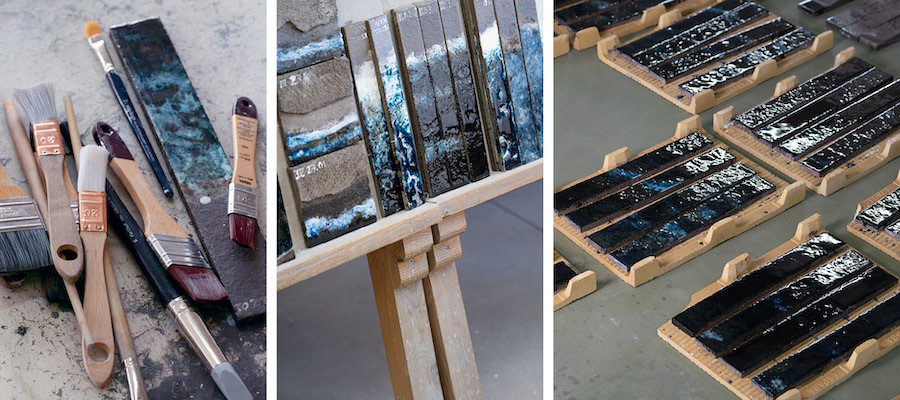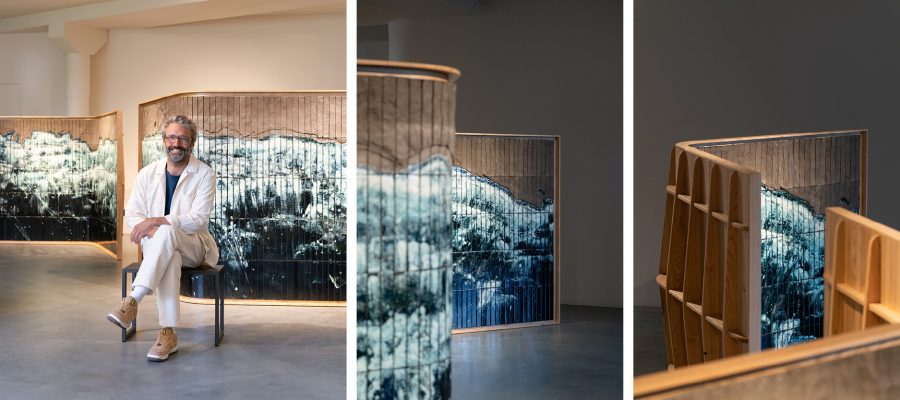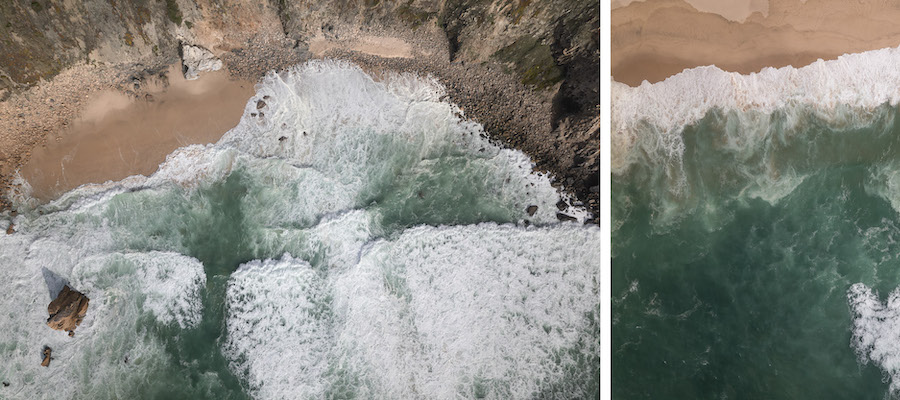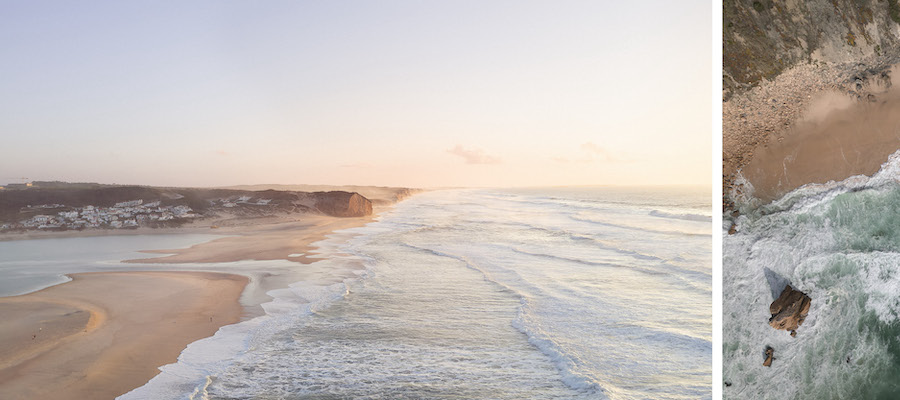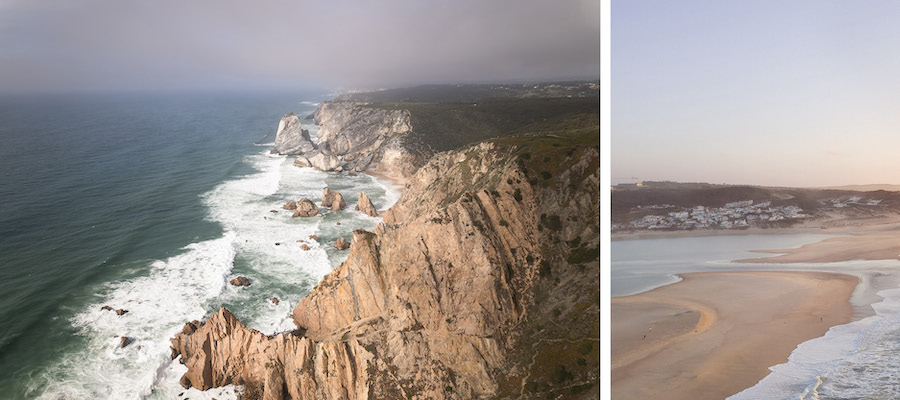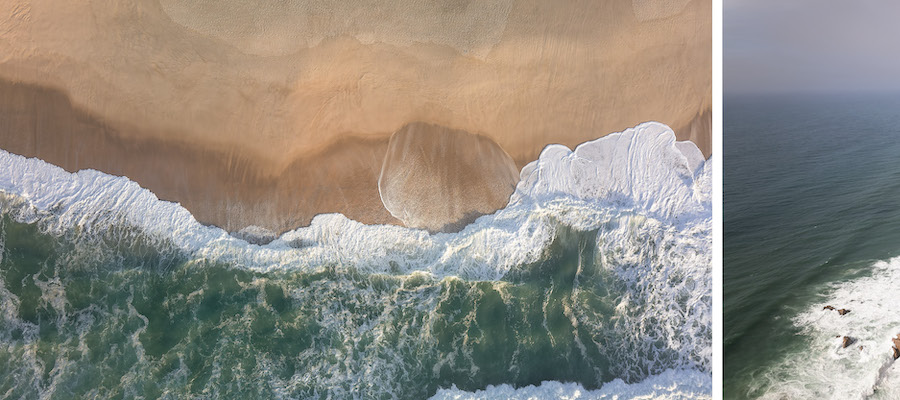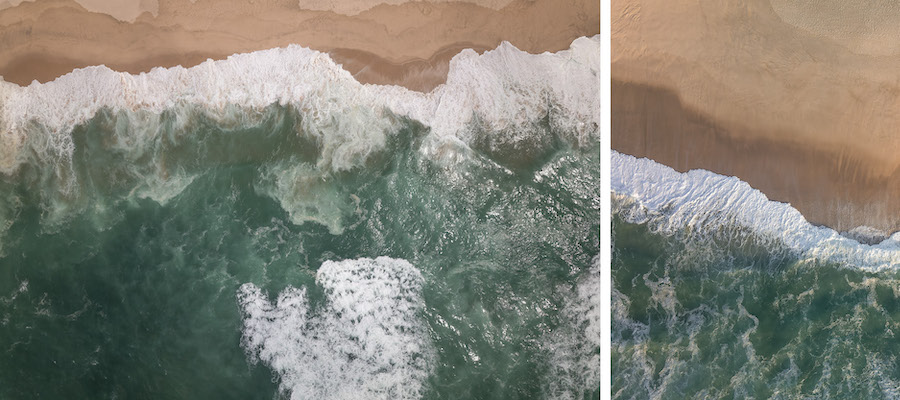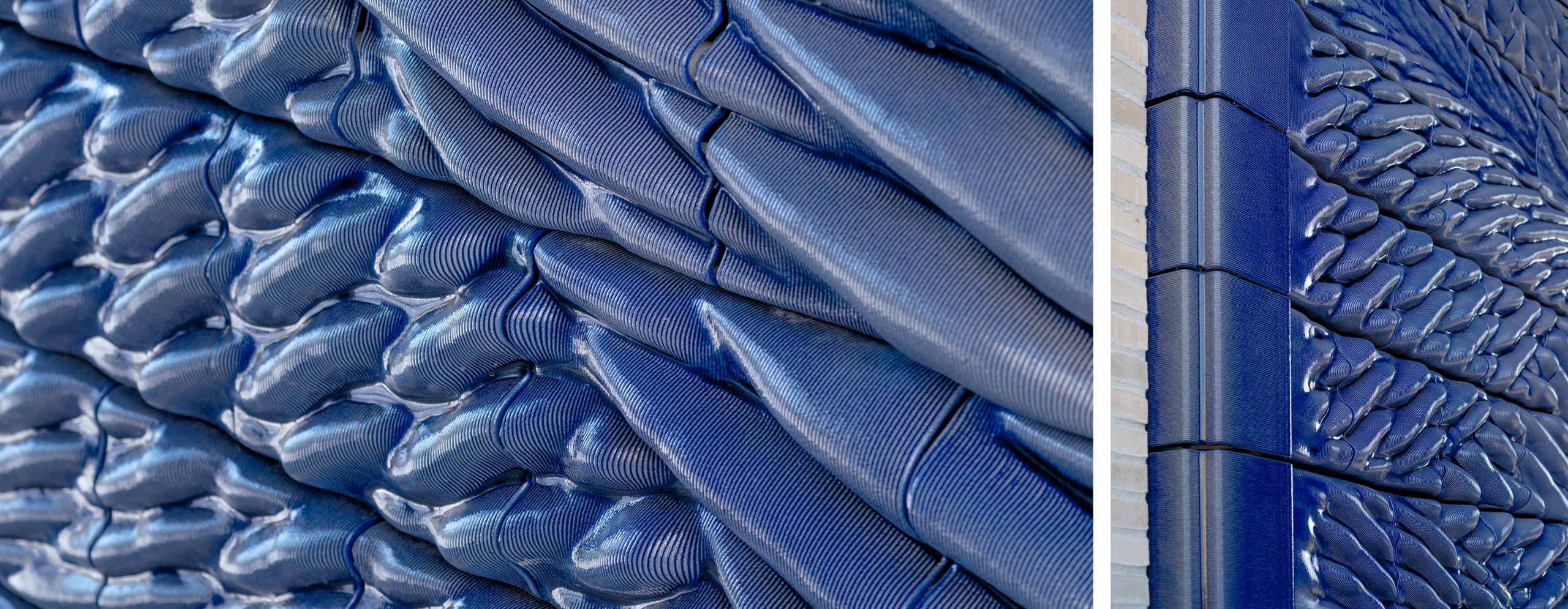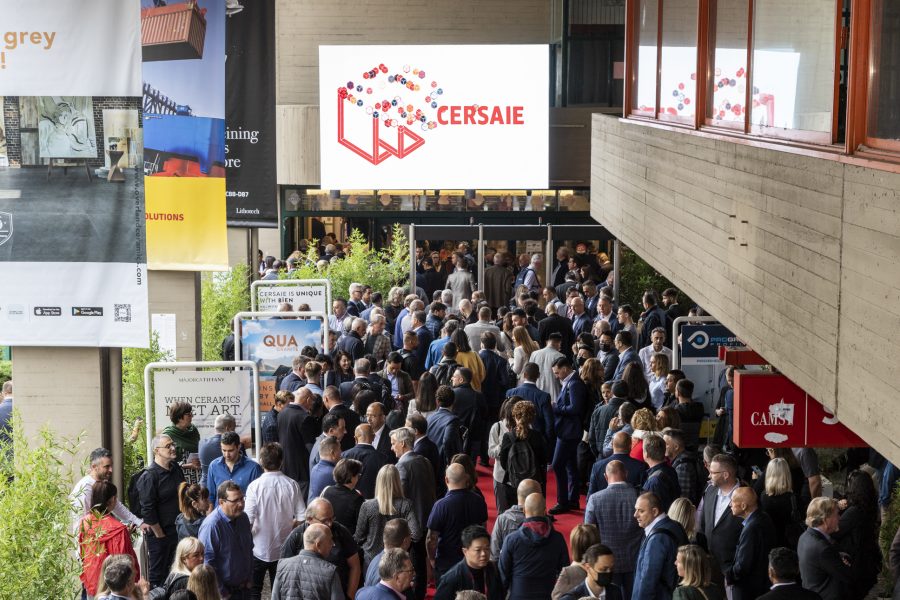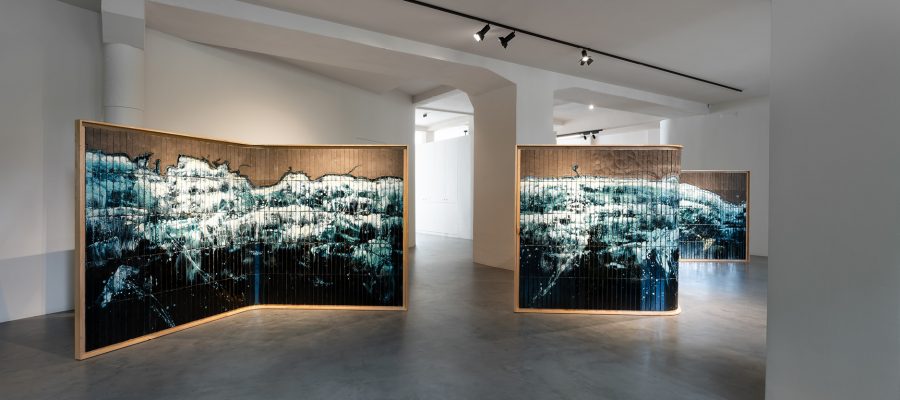
Azulejos by Noé Duchaufour-Lawrance
In Lisbon, designer Noé Duchaufour-Lawrance and his studio Made in situ have collaborated with the Viúva Lamego factory to create Azulejos, a four-handed project reviving the tradition of Portugal's most famous painted tiles.
From the Middle East to the Far East, via Spain, Italy and the Netherlands, ceramic tiles, one of the first products of globalisation, arrived in Portugal in the 16th century. There, it was given the name azulejo. Until the mid-18th century, azulejos were mainly used to decorate palaces, churches and monasteries. Following the earthquake of 1755, which destroyed almost the entire city of Lisbon, the facades of rebuilt buildings were covered with azulejos to limit the risk of fire and combat the corrosive ocean wind. An industry was born.
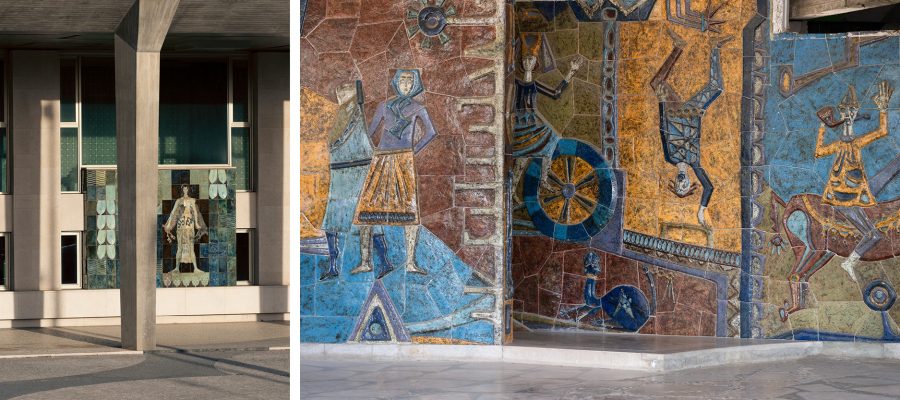
Among them was the Viúva Lamego factory, founded in 1849, which escaped financial crisis in the mid-twentieth century thanks to the intuition of its director at the time, the painter Leite da Silva, who invited some of his artist friends to set up their studios in the factory. The designer Maria Keil was one of the first to accept the invitation, designing the decorations for several of Lisbon’s underground stations, which are now part of the city’s heritage. These collaborations have enabled the company to revitalise its know-how, explore new styles and rediscover old techniques such as corda seca (dry rope) and aresta (creation of a relief on the ceramic tile using a mould applied to the surface of the raw tile).
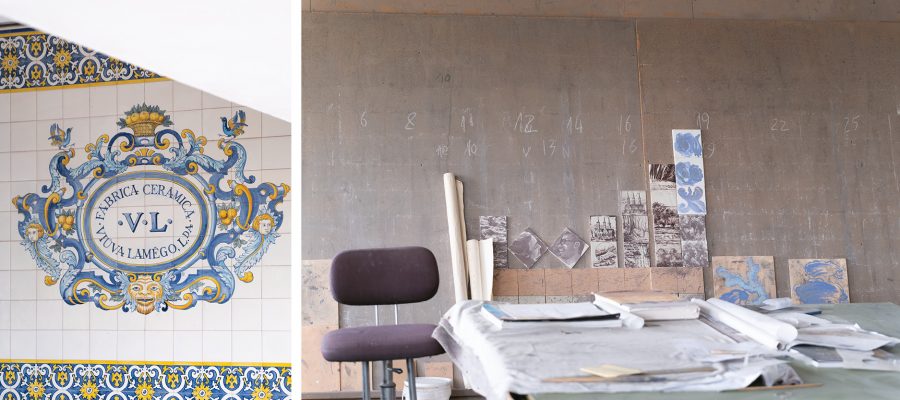
It was in this context that, in 2022, the French artist and designer Noé Duchaufour-Lawrance, creator of Made in situ, a Lisbon-based workshop producing objects for the home, collaborated with the Viúva Lamego factory to design a joint work to celebrate this craftsmanship. Inspired by the urban tableaux of Lisbon, he has created Azulejos, a narrative between the Breton coast and the Portuguese coast of his childhood. The project consists of three vertical panels of chestnut wood, two concave and one convex, measuring 3 metres wide and 1.5 metres high respectively, each covered in ceramic. Each panel represents a segment of the Atlantic coastline seen from the sky. To cover the panels despite their curvature, the ceramic pieces will be rectangular, laid vertically, a suggestion from the manufacture.
For these, the designer experiments to find the best possible representation of his story. After an unsuccessful trial with traditional paint on white ceramic, Noé Duchaufour-Lawrance finally chose black ceramic – a near-first for the company. Black ceramic owes its colour to the high percentage of black grog (pre-fired ceramic ground to a powder and incorporated into the clay) it contains. To paint on this rough, dark clay, coloured glazes were preferred to simple inks. For the white of the swell, it was by observing the work of resident artist Maria Emília Araújo that the French designer opted for a white powdered glass. These glazes, all more or less grey before firing, are applied by hand, brush or sponge to an assembly of slightly bumpy unbaked clay tiles. The glaze is applied in layers, creating more or less transparent and intense effects depending on the number of layers. During the firing process, they liquefy and then solidify to reveal the intensity of the colours and the depth of the material effects. For Noé Duchaufour-Lawrance, this is the moment when “the material becomes a volume rather than a simple tile”.
